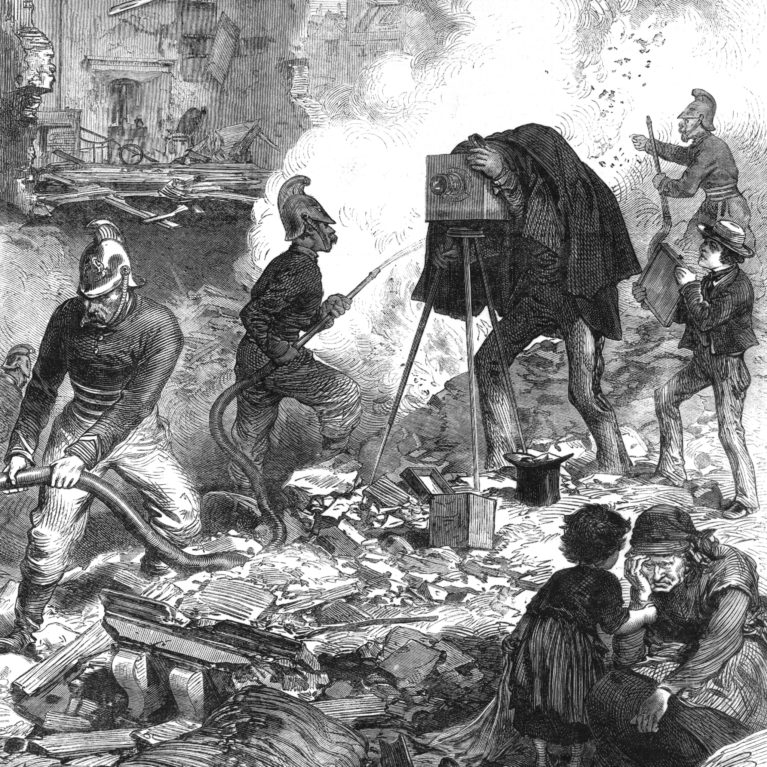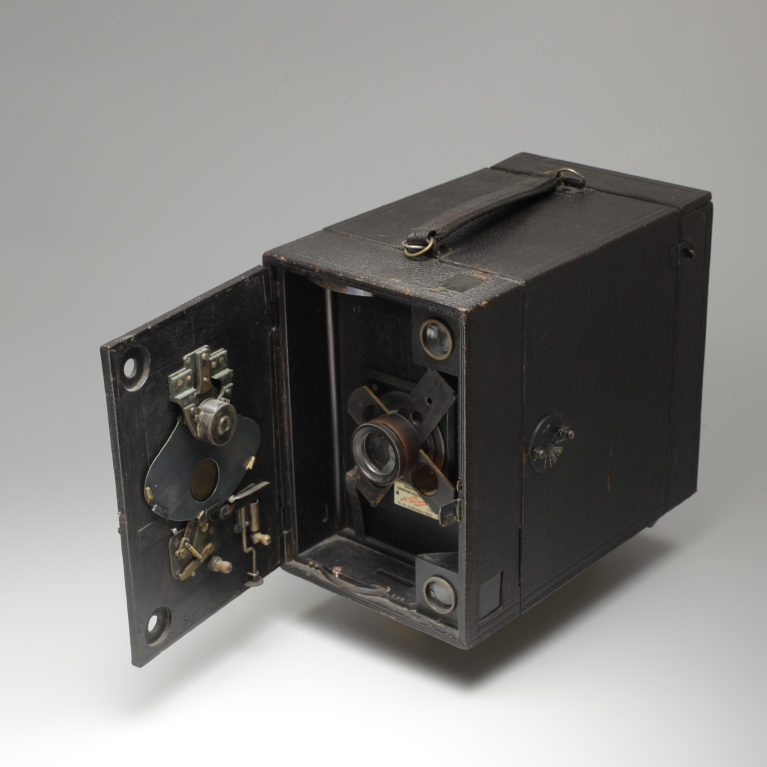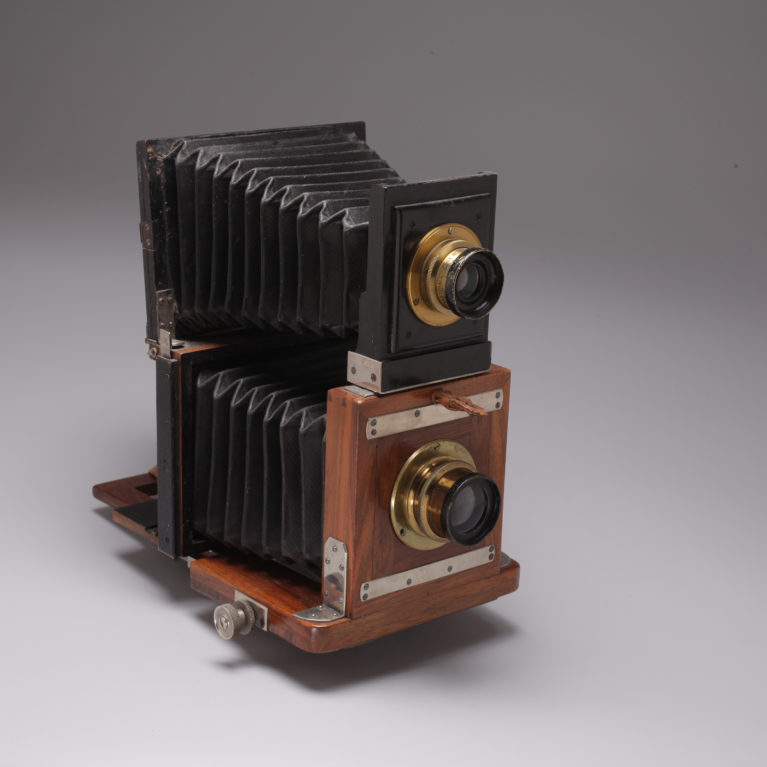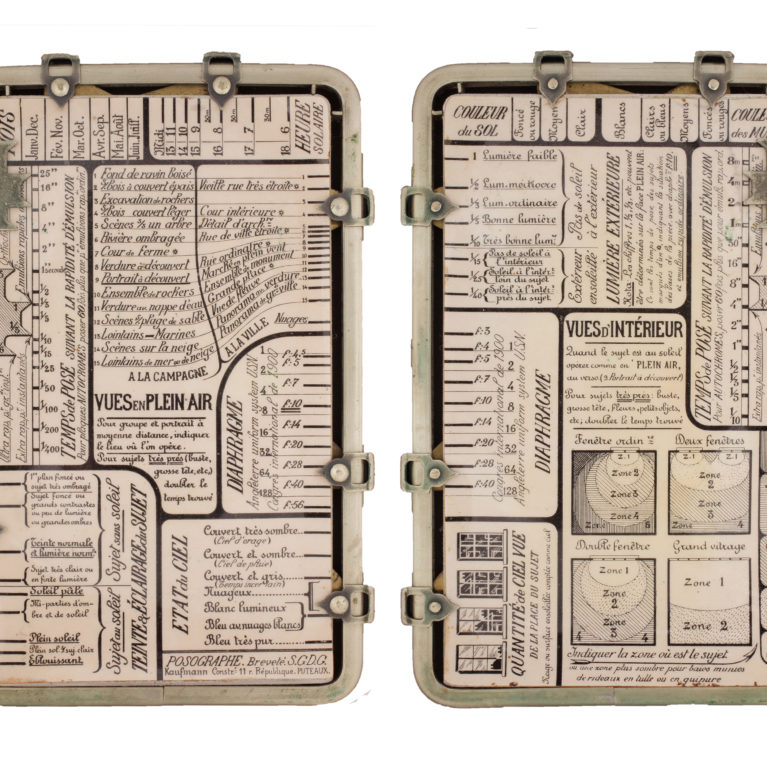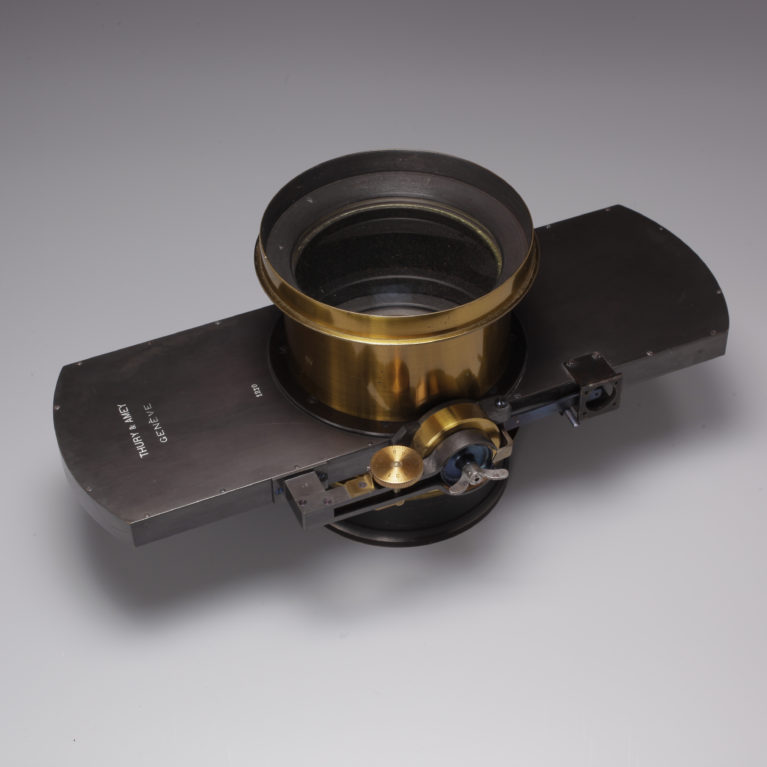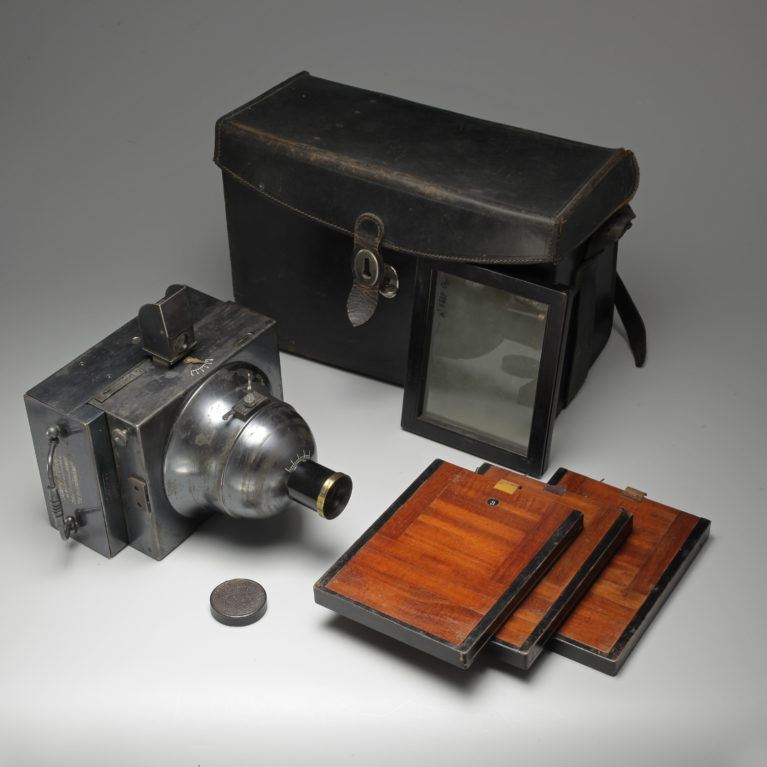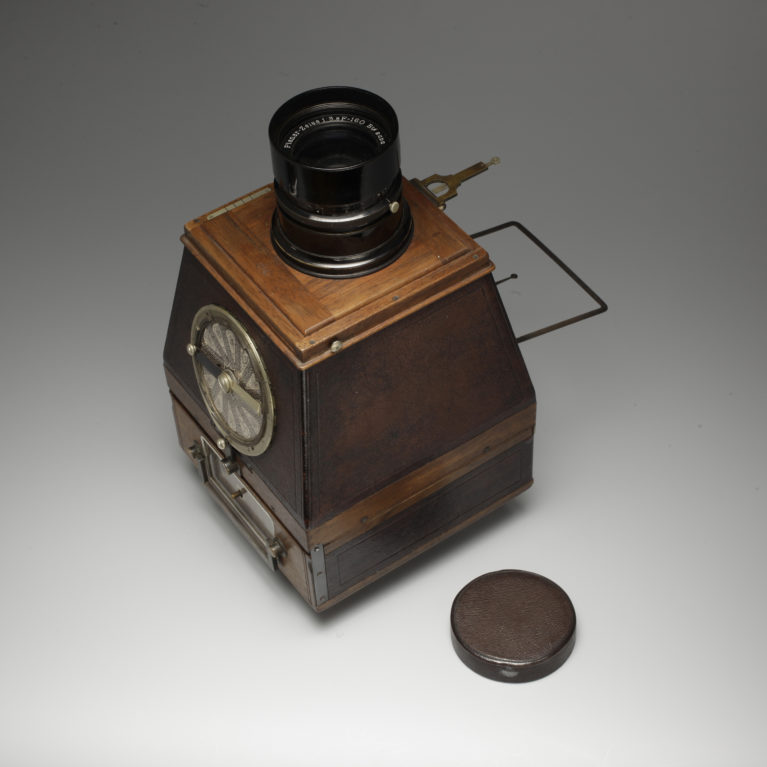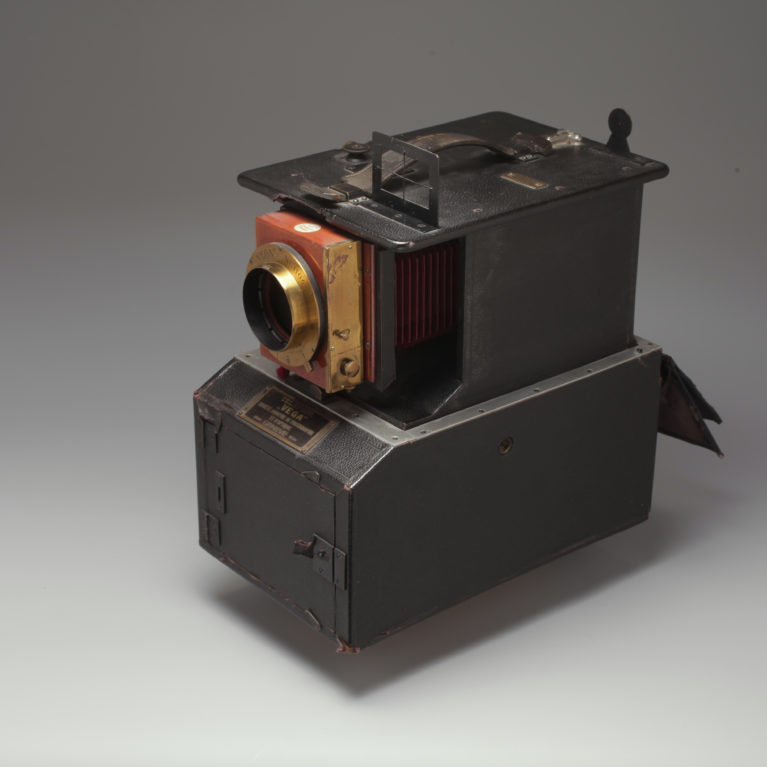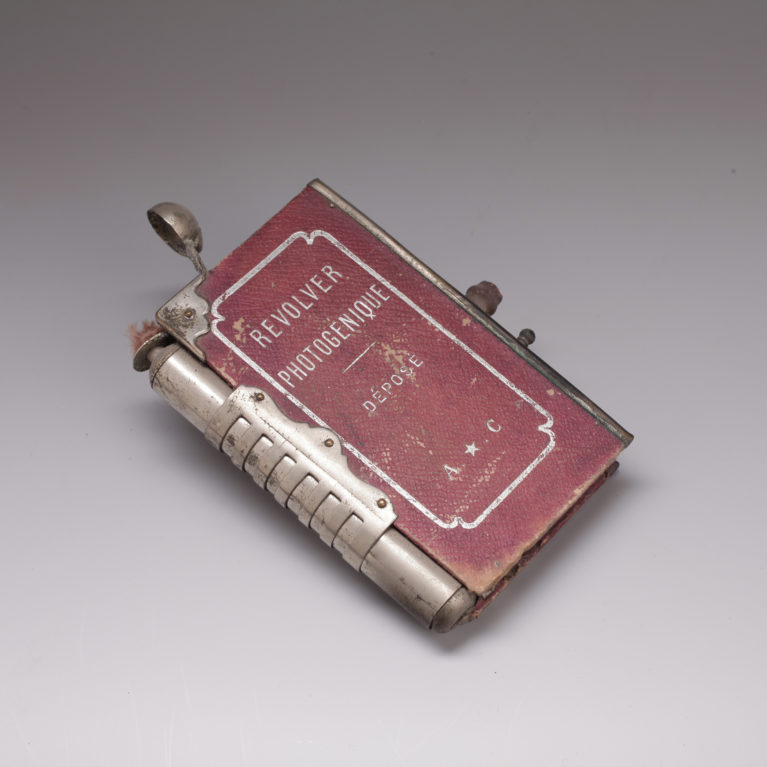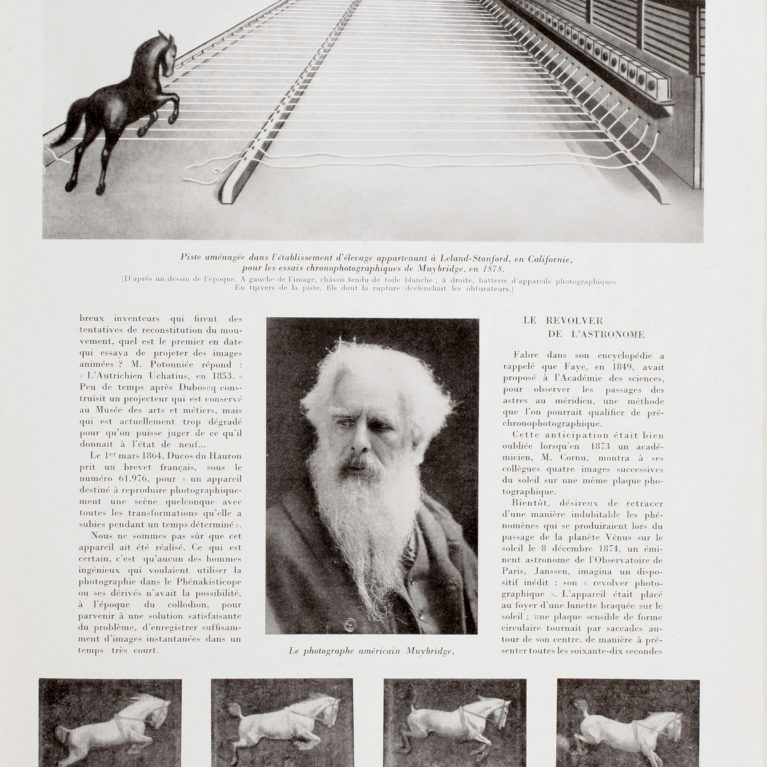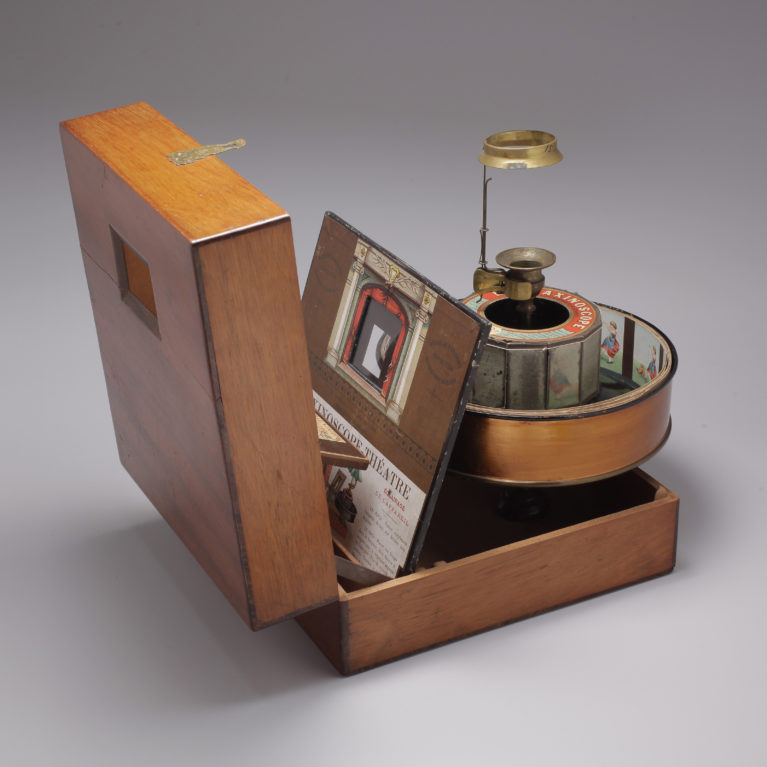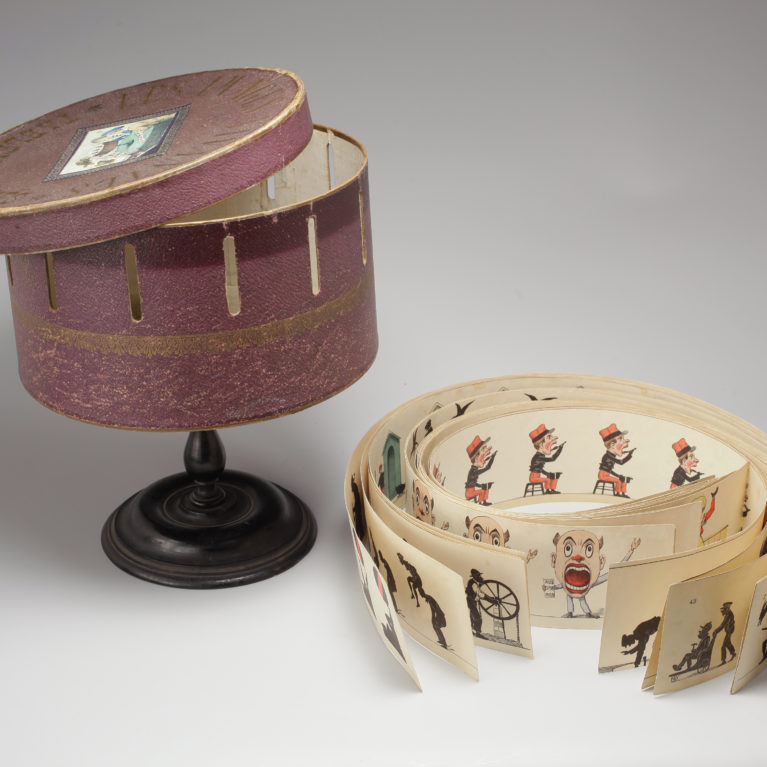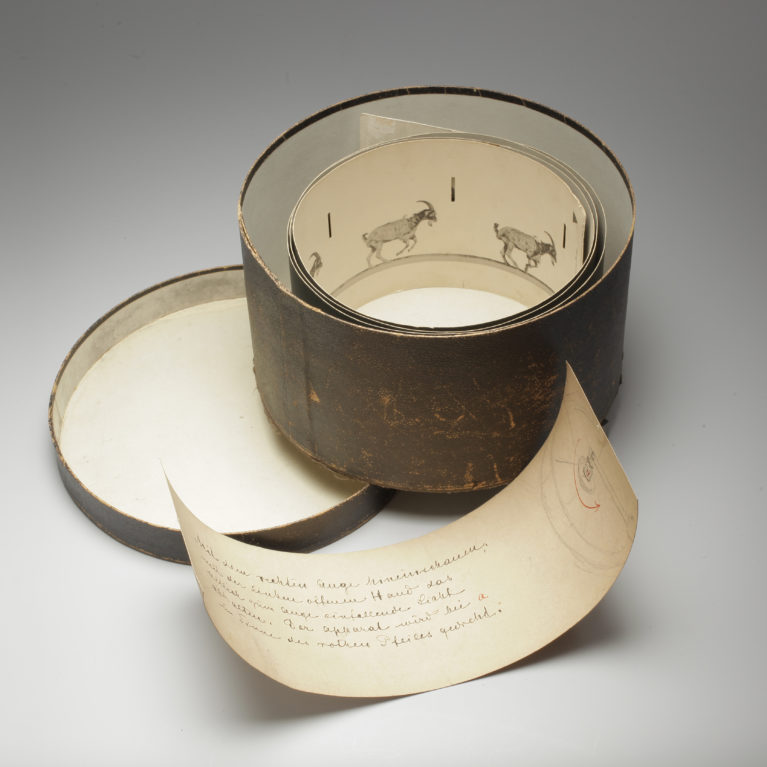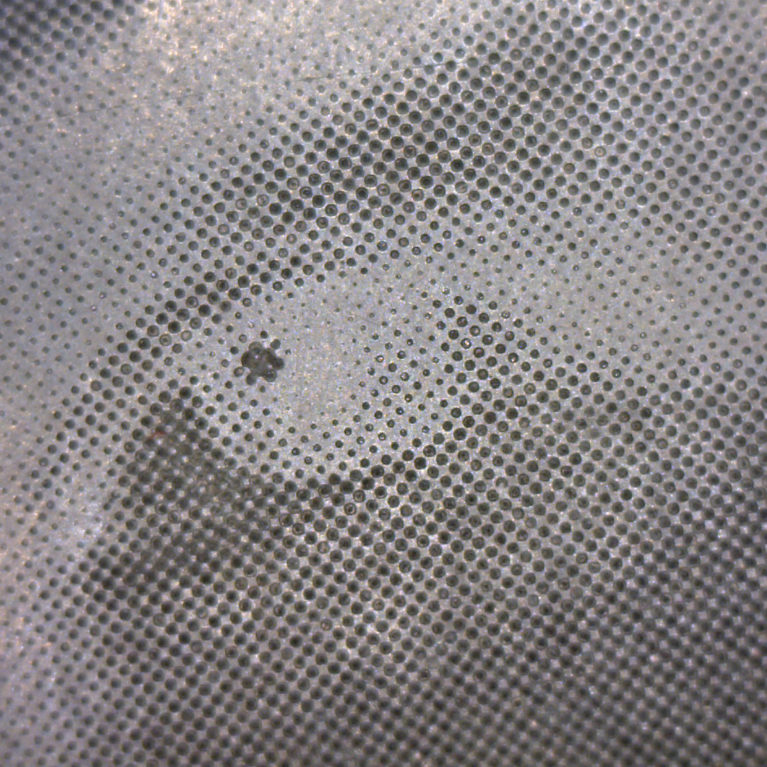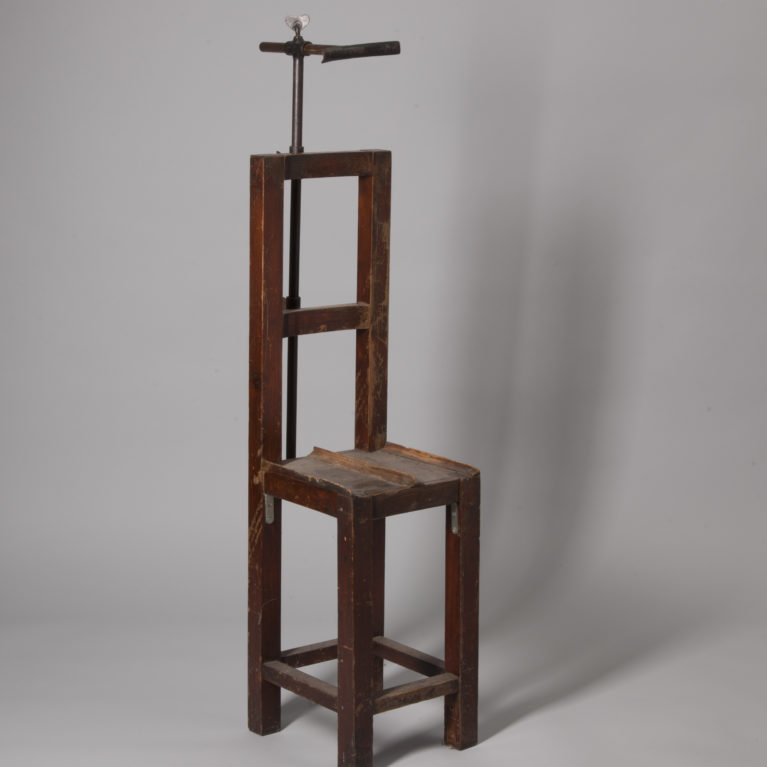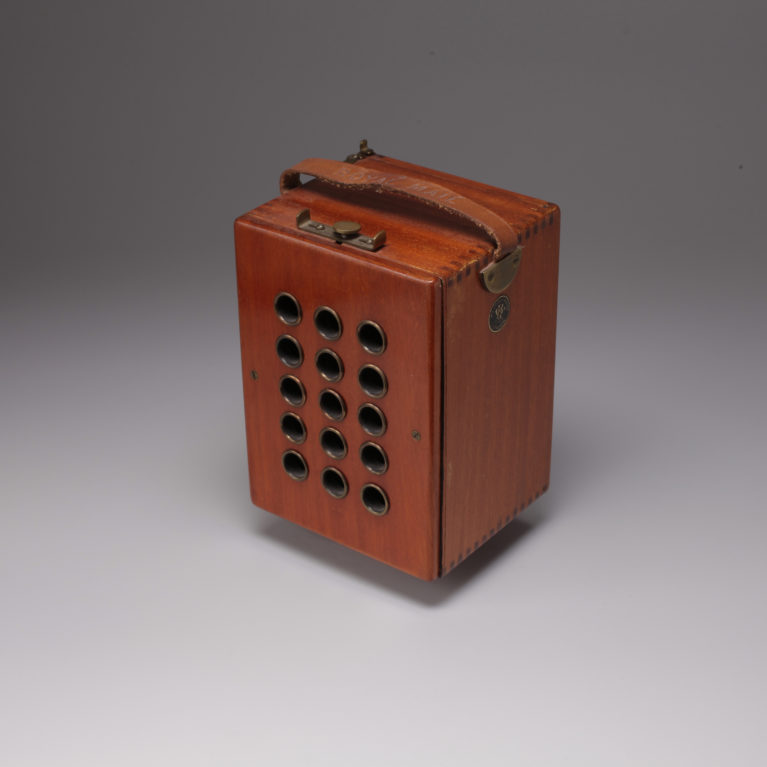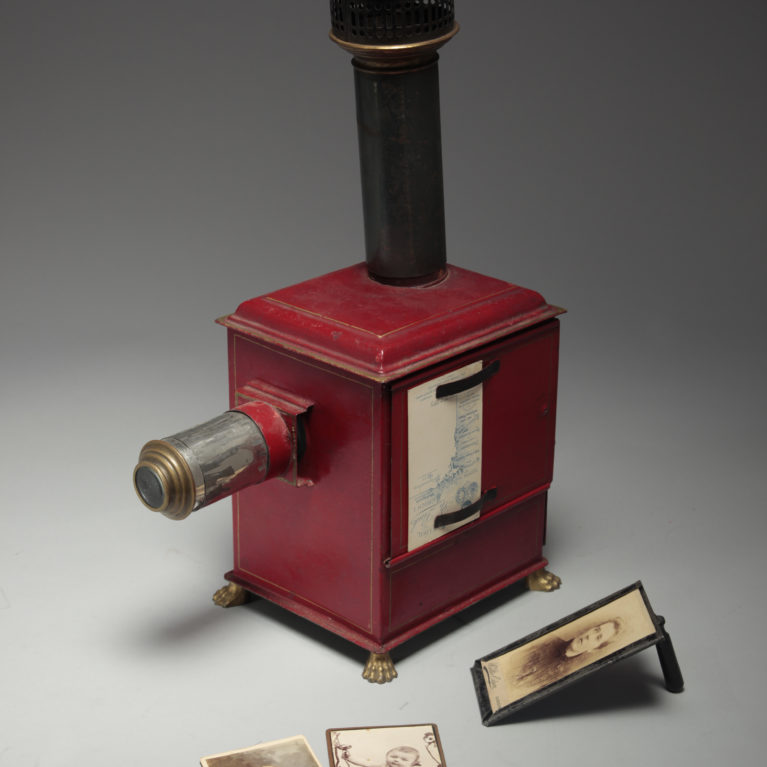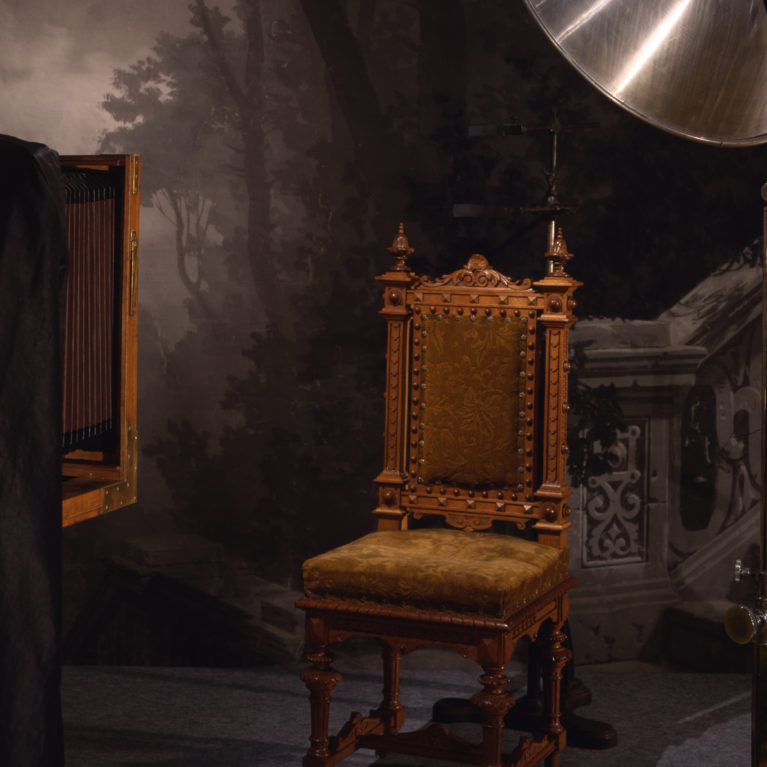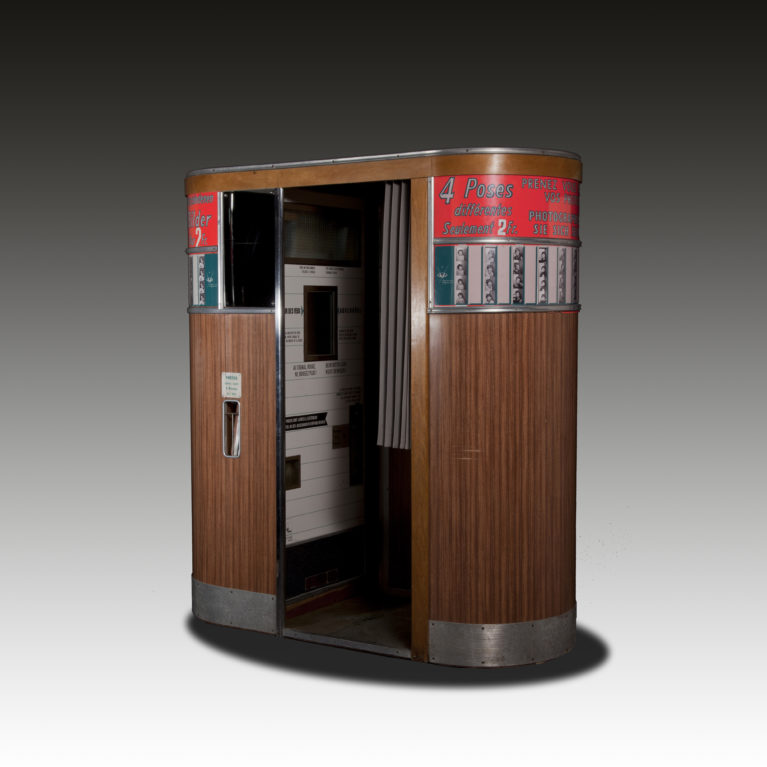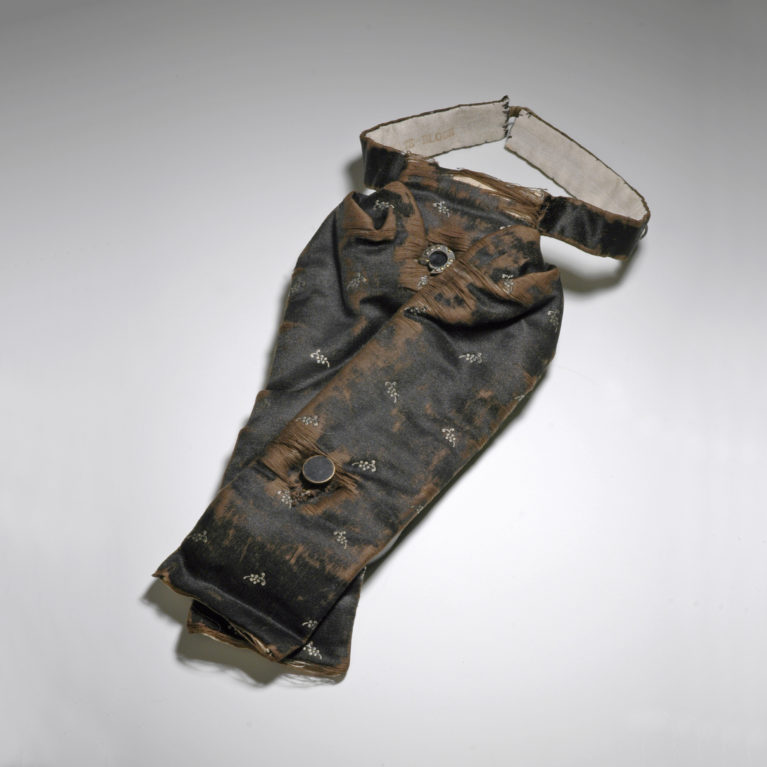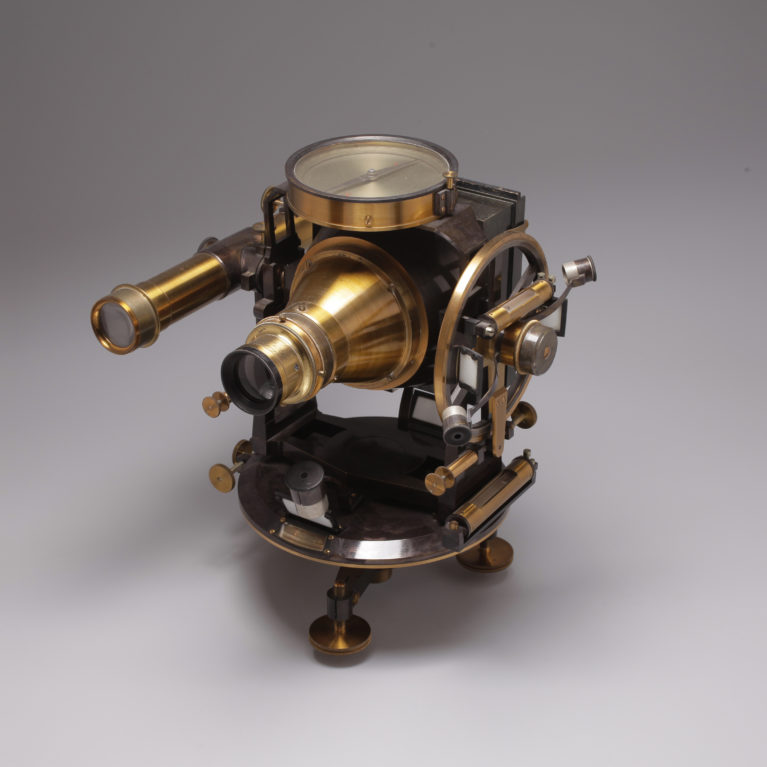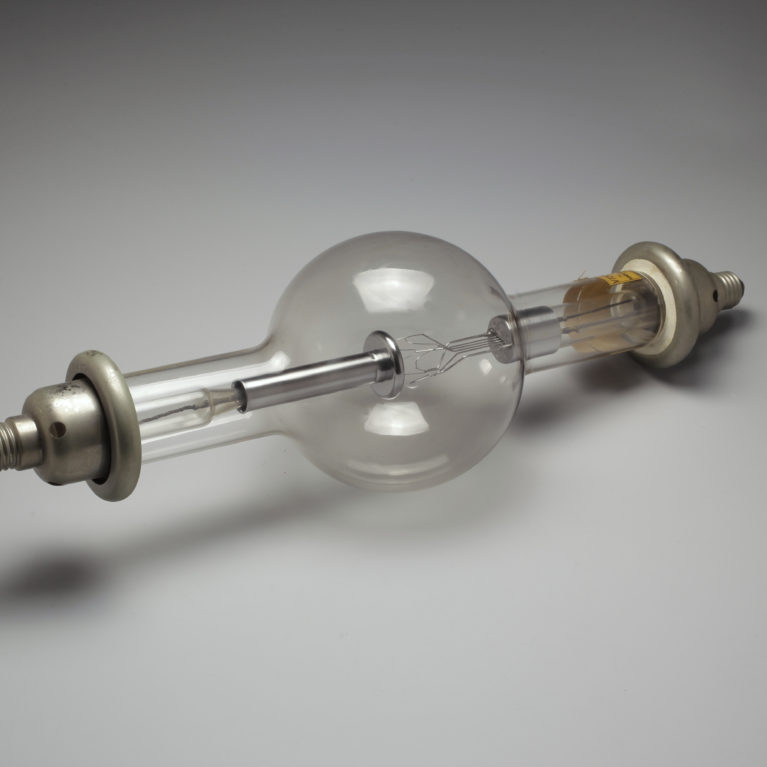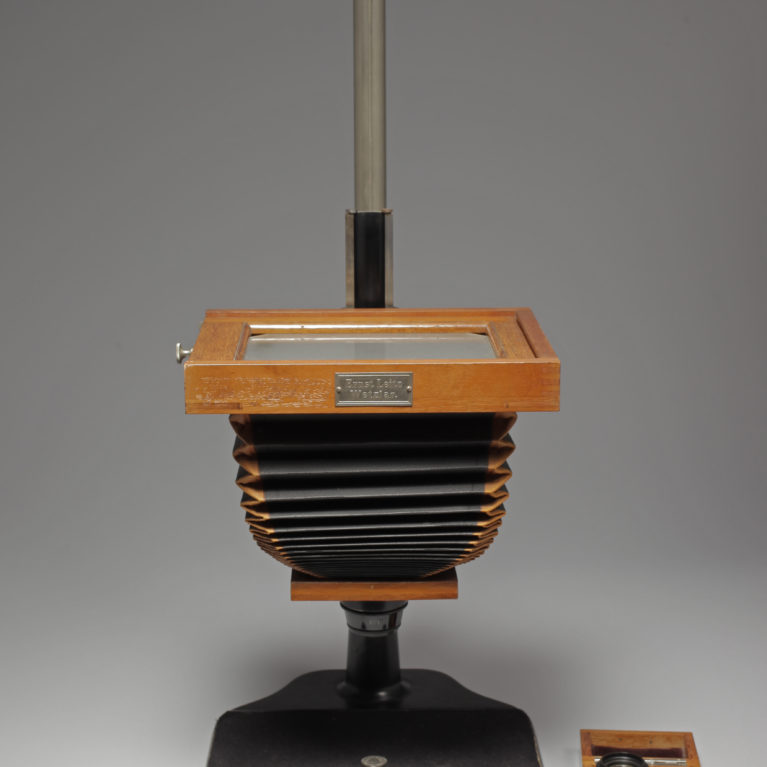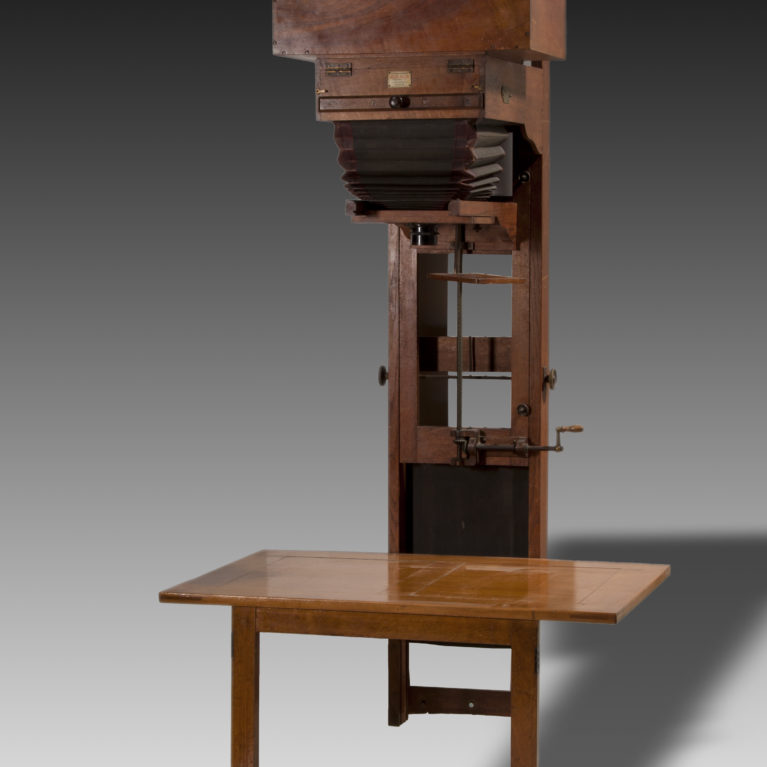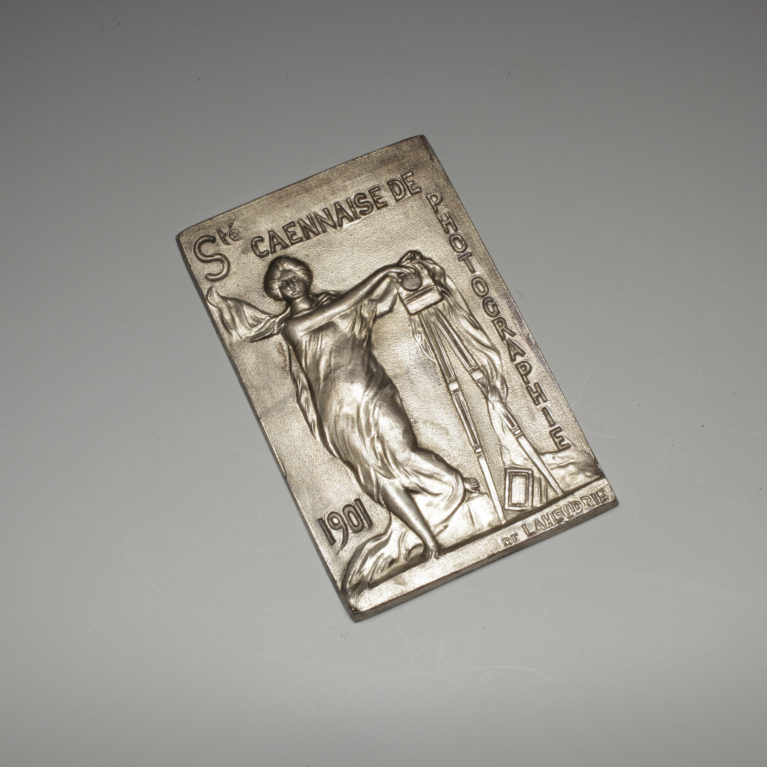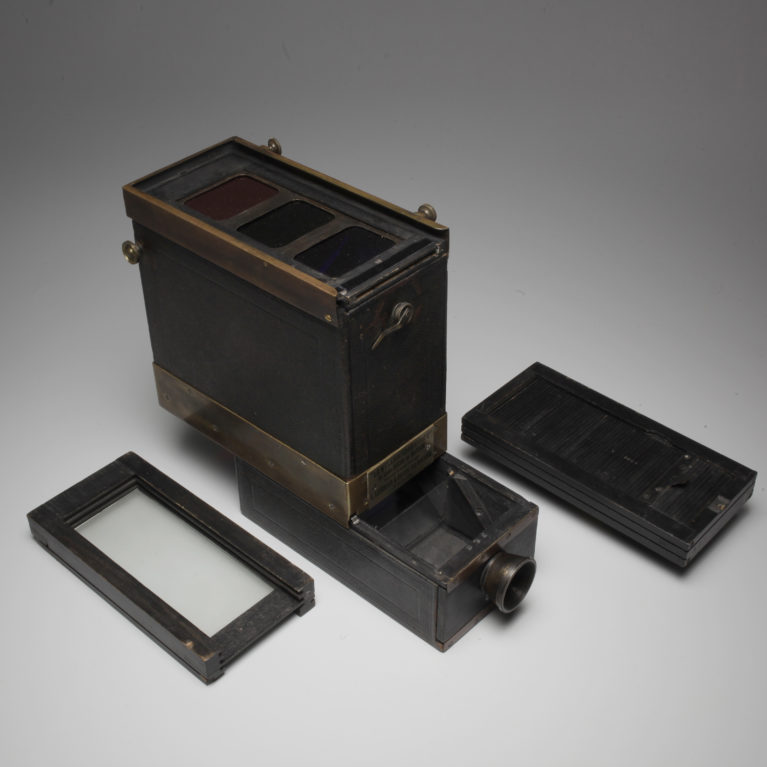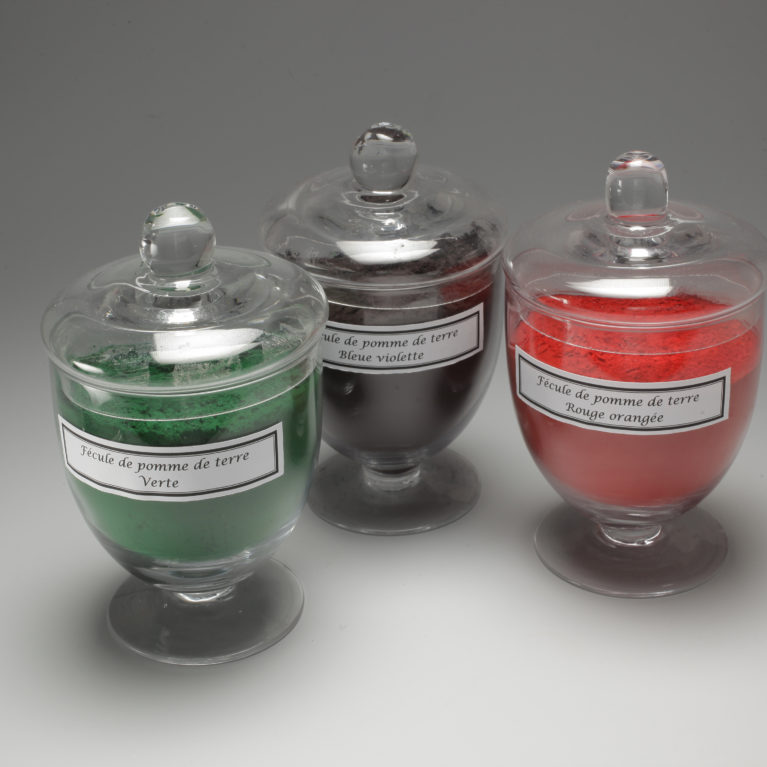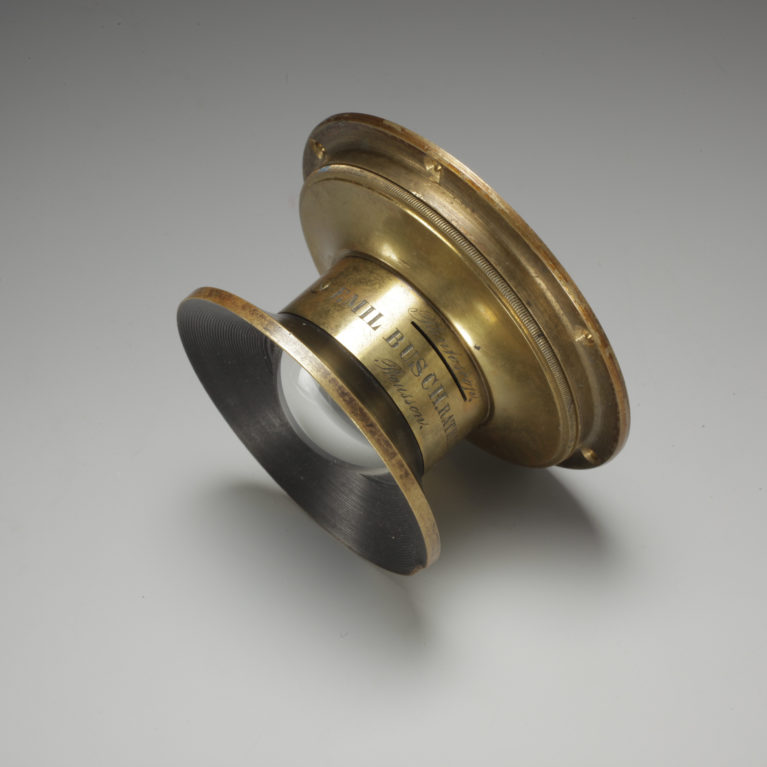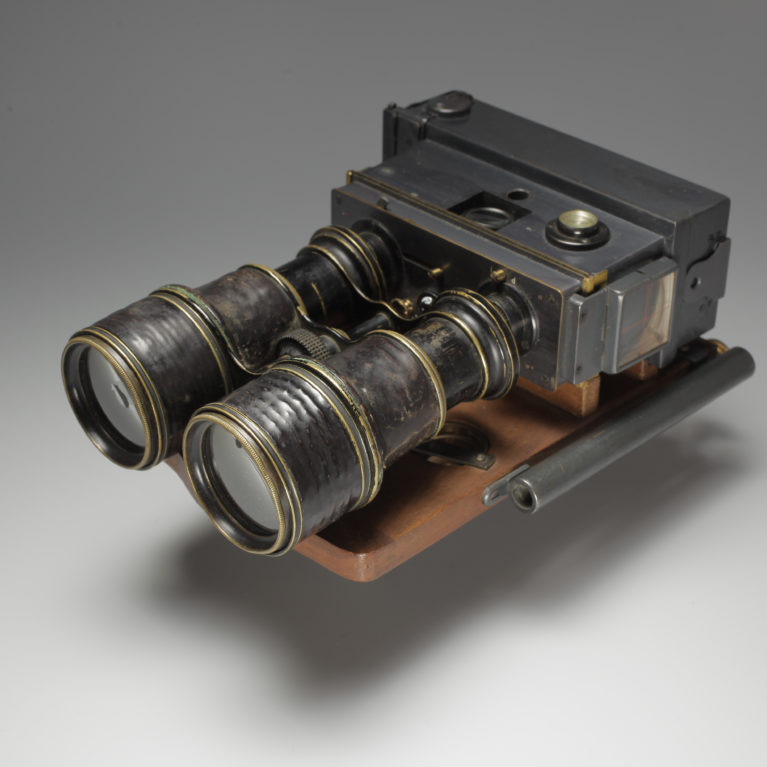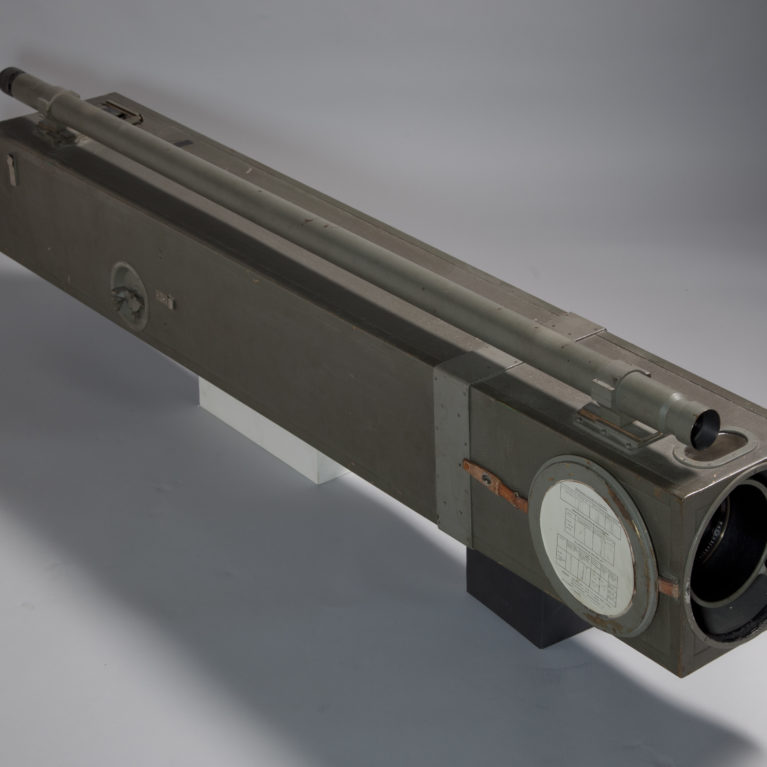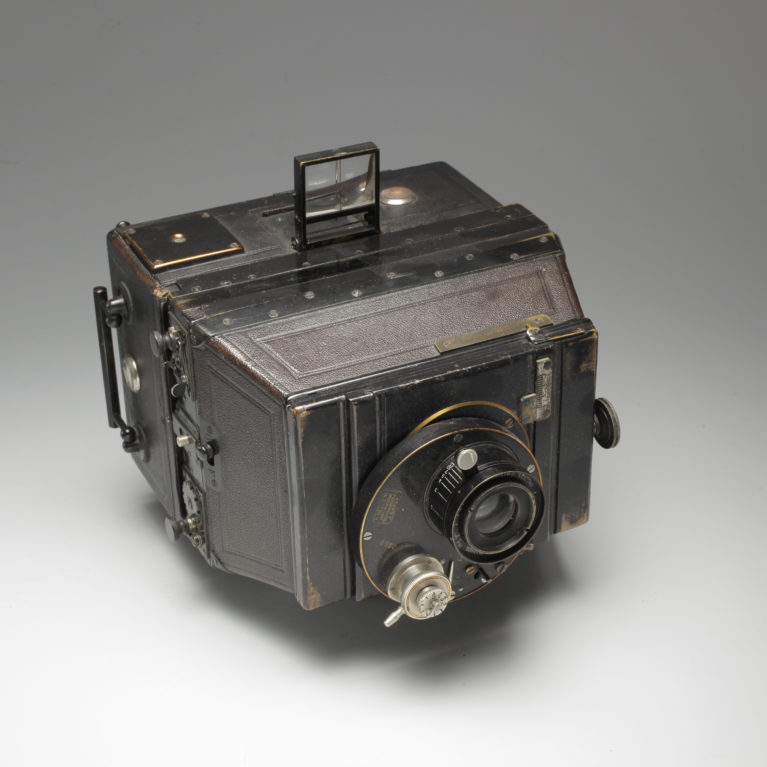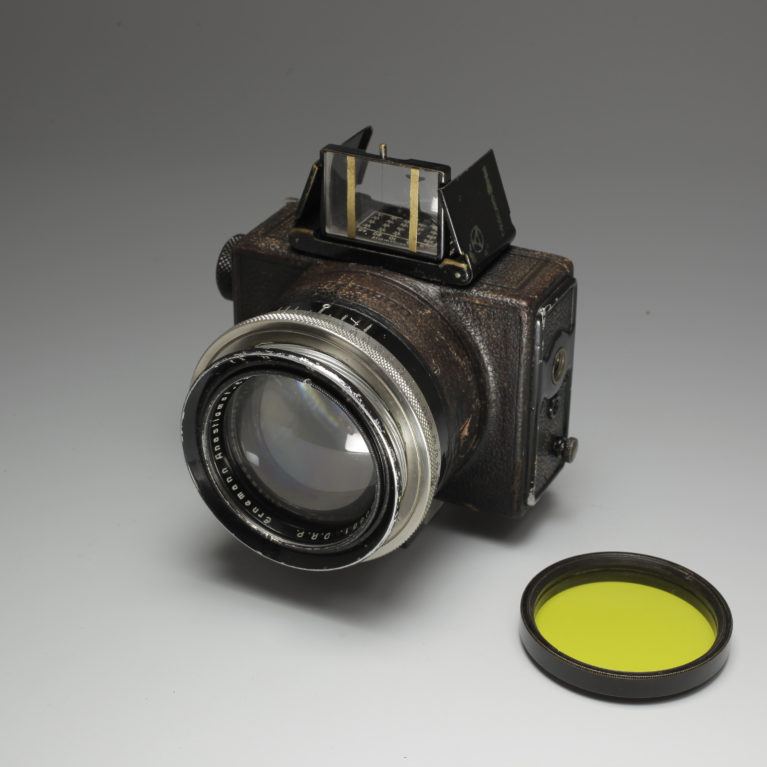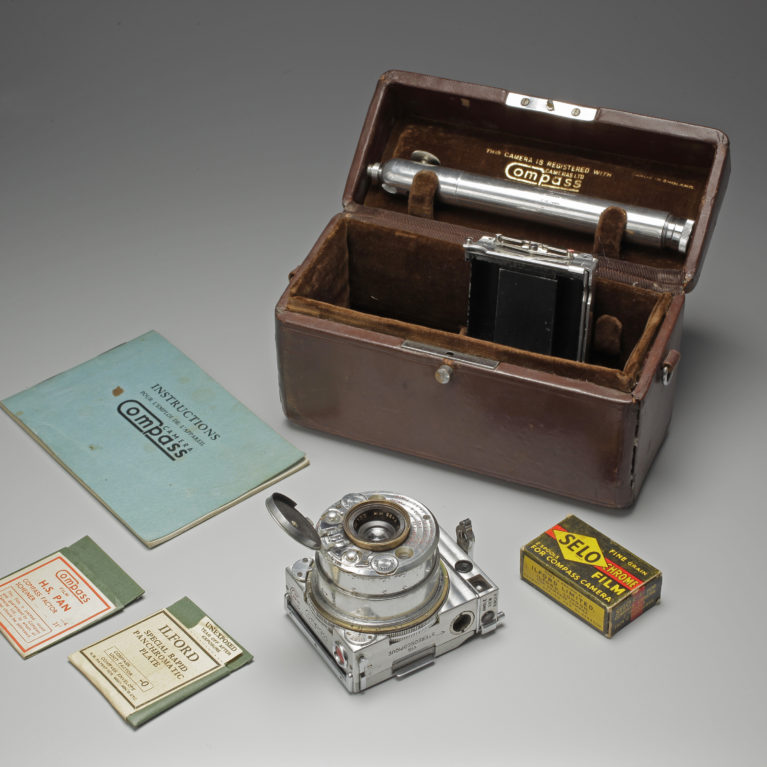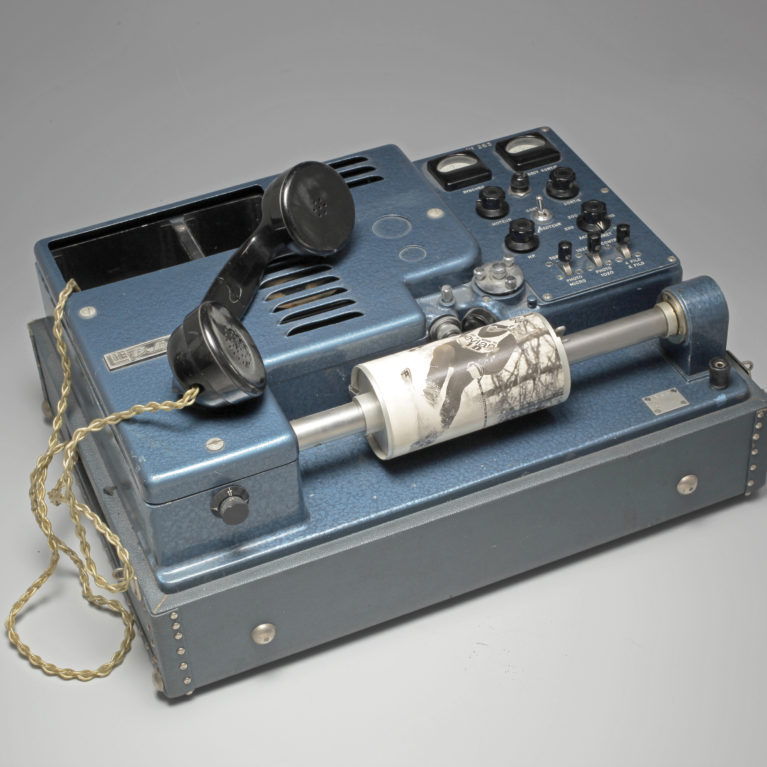The plate era
Inventions at the end of the 19th century led to mass manufacturing of plates, which had become much more sensitive to light, opening the way to the creation of instantaneous photographs. The recorded image brought movement to a standstill, froze a gesture, laid bare what was elusive and invisible. This completely new visual representation of movement was poorly understood, however…
Advances in technology accelerated, and naturally enough, photography both went with the flow and took advantage of it. From then on, cameras could be hand-held, and improvements were made, which saw significant increases in the quality and luminosity of lenses. Electricity made lighting the studio simpler, and offered much more stable light sources for projection and, in particular, for enlargement.
In parallel to a diversification in the professional photographer’s activities, the simplified practice of photography aroused an ever-growing interest from the public, with newly founded societies attracting amateurs keen to hone their techniques.
At the dawn of the 20th century, the invention of halftone photography, which allowed the photographic image to be printed straight into books, magazines, and daily newspapers, opened up an enormous market, not the least of which was press photography.
While people were still asking questions about photography’s status as an art form, they were no longer in any doubt about its range of applications. Photography quite simply became indispensable.


